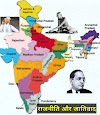Autorotation:
Autorotation in Helicopter after engine/Tail Rotor failure
Autorotation
The
state of flight in which the main rotor system of a helicopter is rotated by
the action of air going up through the rotor rather than engine power driving
the rotor is known as autorotation. Air is taken into the main rotor system
from above and exhausted downward during powered flight, but air goes up into
the rotor system from below when the helicopter descends during autorotation. A
freewheeling unit, which is a particular clutch system that permits the main
rotor to continue revolving even when the engine is not running, facilitates
autorotation. If the engine fails in flight, the freewheeling unit
automatically disconnects the engine from the main rotor system, allowing the
main rotor to rotate freely. It is the technique by which a helicopter may safely
land if one of its engines fails; as a result, all helicopters must demonstrate
this capacity in order to be certified.
In
helicopters, the most typical application of autorotation is to safely land the
aircraft in the case of an engine or tail-rotor failure. Helicopter pilots are
taught this emergency procedure as part of their training.
Normally,
air is brought into the main rotor system from above and exhausted downward
during powered helicopter flight, but during autorotation, air is drawn up into
the rotor system from below as the helicopter descends. Autorotation is made
possible mechanically by a freewheeling unit that allows the main rotor to
continue spinning even when the engine is turned off, as well as the
aerodynamic forces of relative wind that keep the rotor spinning. In the event
of a full engine failure, it is the method through which a helicopter can land
safely. As a result, in order to get a type certificate, all single-engine
helicopters must demonstrate this capacity.
Jean
Boulet set the record for the longest autorotation in history in 1972, when he
flew an Aerospatiale SA 315B Lama to a record altitude of 12,440 m (40,814 ft).
Because of the -63 °C (-81.4 °F) temperature at that altitude, the engine flamed
out and could not be restarted as soon as he lowered power. He was able to land
the plane safely thanks to autorotation.
Descent and Landing in Autorotation
The
descending maneuver in which the engine is disconnected from the primary rotor
system and the rotor blades are propelled exclusively by the upward flow of air
through the rotor is known as "autorotation." When the engine
rotational speed is less than the rotor rotational speed, the freewheeling unit
disengages. If the engine fails during, the freewheeling unit automatically disconnects
the engine from the main rotor system, allowing the main rotor to rotate
freely.
The
most typical reason for autorotation is an engine problem or failure, but
because an autorotation produces virtually no thrust, it can also be used in
the event of total tail rotor failure or loss of tail-rotor efficacy. Autorotation can also be utilized to recover from a vortex ring state,
commonly known as settling with power, if altitude allows. A successful landing
is always contingent on the helicopter's height and velocity at the start of
autorotation.
The
primary rotor blades provide lift and push from their angle of attack and
velocity at the time of engine failure. The pilot decreases lift and drag by
instantly lowering collective pitch, which must be done in the event of an
engine failure, and the helicopter begins an instantaneous descent, producing
an upward air flow through the main
rotor system. The upward flow of air through the rotor generates enough push to
keep the rotor spinning at a constant speed during the drop. During
autorotation, the main rotor transmission drives the tail rotor, thus heading
control is maintained as in normal flight.
The
rate of descent in autorotation is influenced by several elements, including
density altitude, gross weight, rotor rotational speed, and forward airspeed.
Airspeed is the pilot's major control over the pace of fall. As in normal
flight, the cyclic pitch control is used to achieve higher or lower airspeeds.
The rate of descent is high at zero velocity and drops to a minimum between 50
and 90 knots, depending on the helicopter and the conditions discussed above.
The rate of fall increases as the airspeed exceeds the speed that yields the
minimal rate of descent. The rotor is highly effective even at zero airspeed,
as it has about the same drag coefficient as a parachute while being made up of
blades.
The
kinetic energy stored in the rotating blades and the forward movement of the
aircraft are used to reduce the rate of descent and make a smooth landing while
descending from an autorotation. Stopping a helicopter that is descending
quickly requires more rotor energy than stopping a helicopter that is
descending slowly. As a result, autorotative descents at extremely low or
extremely high airspeeds are more dangerous than descents at the minimal rate
of descent airspeed & skilled is required to maneuver the same. An ideal
landing maneuver brings all vertical, horizontal, and rotational movement
within the ship to a complete stop. In practice, a flawless landing is uncommon.
A
power-off glide is most efficient at a certain airspeed for each helicopter
type. The best airspeed is one that has the greatest glide range while
descending at the slowest pace. Although each model of helicopter has a
different airspeed, certain elements (density height, wind) affect all designs
in the same way. For each type of helicopter, the exact airspeed for autorotation is determined based on average weather and wind conditions, as
well as usual loading.
In high density altitude or gusty wind conditions, a helicopter carrying heavy cargo can benefit from a little increased airspeed in the descent. With low density altitude and light loads, a little decrease in normal airspeed yields the optimum results. The pilot can attain about the same glide angle in each set of circumstances and estimate the touchdown location by using this general approach of fitting airspeed to existing conditions. Typically, the ideal glide angle is 17–20 degrees.
Vertical Autorotation
Blade regions in vertical autorotation descent.
The
rotor disc is separated into three sections during vertical autorotation: the
driven region, the driving region, and the stall region. The blade pitch, rate
of descent, and rotor rotational speed all influence the size of these areas.
The sizes of the zones alter in relation to each other as the autorotative
rotational speed, blade pitch, or rate of descent changes.
The driven zone is the area at the end of the blades, also known as the propeller region. It usually makes up about a third of the radius. The most drag is generated in the driving region. The overall effect is a slowing down of the blade's spin.
The
driving zone, also known as the autorotative region, is a portion of the blade
radius that creates the forces required to turn the blades during autorotation.
The total aerodynamic force in the driving region is slightly front of the
rotation axis, resulting in a constant accelerating force. This slant generates
thrust, which accelerates the blade's rotation. The size of the driving zone
changes depending on the blade pitch, rate of descent, and rotor rotational
speed.
The
stall region is the inner quarter of the rotor blade, and it operates above its
maximum angle of attack (stall angle), creating drag and slowing blade
rotation. The collective pitch is adjusted to balance the blade acceleration
forces from the driving zone with the deceleration forces from the driven and
stall regions, resulting in a constant rotor rotational speed.
The
pilot can adjust autorotative rotational speed by adjusting the size of the
driving zone. When the collective pitch is increased, for example, the pitch
angle increases in all regions. The point of balance moves inboard throughout
the span of the blade, increasing the size of the driven region. The stall
region expands as well, while the driving region shrinks. The acceleration
force and rotational speed of the driving zone decrease when the size of the driving
region is reduced.
Autorotation (Forward Flight)
In forward flight, autorotative force is produced in the same way it is when the helicopter is descending vertically in still air. Because forward speed alters the airflow up through the rotor disc, all three zones migrate outboard along the blade span on the retreating side of the disc, where AOA is greater. More of the blade falls in the driven region when the AOA on the advancing side blade is lower. More of the blade is in the stall region on the retreating side. The flow is reversed in a tiny area near the root, reducing the size of the driven region on the retreating side.
The pilot must flare the helicopter to decelerate before landing after an autorotative descent (or autorotation). The flare is started by the pilot pressing aft cyclic. The airflow patterns around the blades alter as the helicopter flares back, increasing the rpm. To keep the rpm within working limitations, pilots must modify the collective as needed.
Also Read
ROM (Read Only Memory): What is ROM, Functions of ROM in Computer
Random Access Memory: What is it and What does it do in Computer?
Black Box: What is CVR & FDR in Aircraft, what it does?
Flight Data Recorder (Black Box): FDR & CVR in Aviation
Pegasus Spyware: What is Pegasus Spyware & How it Works?
Boolean Algebra: The Foundation of Logic Gates
Aircraft Maintenance Engineer | How to become an AME
Aircraft Parking System - How it Works
How to become Pilot in India
Airbus A320 PTU Logic & Operation
Case Study CDS Bipin Rawat Helicopter Crash
Automatic Dependent Surveillance Broadcast (ADS-B) System
Watch Video on YouTube











0 Comments